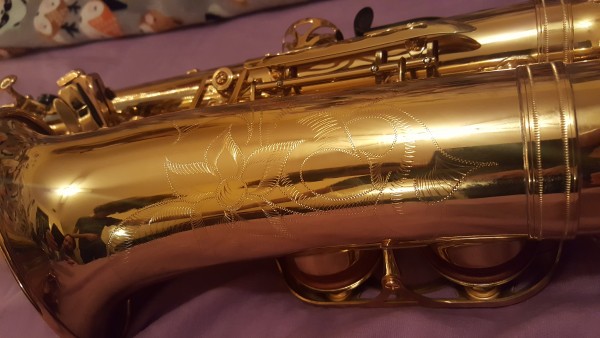

- #Yamaha saxophone serial number lookup for mac os x#
- #Yamaha saxophone serial number lookup mac osx#
- #Yamaha saxophone serial number lookup install#
- #Yamaha saxophone serial number lookup full#
#Yamaha saxophone serial number lookup for mac os x#
It features ZOC Terminal (SSH/ Telnet/Serial Client) ZOC is a well known SSH/SSH2/telnet client and terminal Wolapp Cloud Client for Mac OS X Free desktop client for the web-based Wolapp Cloud. Citrix ICA Client Citrix ICA Client 10.00.603 is a communication tool Firedrop Blog Client A client -side blog tool written in Python. We have a user who is attempting to print from a Mac OS X host, but the printer always prints in duplex mode. We upgraded all users to 1912 and this resolved most of the users' printing issues. Users previously had printing issues while running the 7.15 LTSR VDA.
#Yamaha saxophone serial number lookup mac osx#
Users on Mac OSX 10.10 using the Receiver for Mac 11.9 – Tech Preview should report issues to the Tech Support Discussions Forum. Reporting issues for tech preview Tech preview is not supported by Citrix tech support.
#Yamaha saxophone serial number lookup full#
As this is a major OSX update, the full extent of possible issues user may experience with Receiver for Mac 11.8.2 is unknown.

#Yamaha saxophone serial number lookup install#
After Install cancel out of pop up screens that occur after install-that ask for server or single sign on. Client v4.3 for Windows (Vista/WIndows 7) Microsoft Windows Citrix Client Reciever 4.3. Receive version updates, utilities and detailed tech information. One of the most radical, however temporary, revisions of saxophone keywork was made in the 1950s by M.ĭownload Citrix Workspace App, Citrix ADC and all other Citrix workspace and networking products. Further developments were made by in the 1930s and '40s, including offsetting tone holes and a revamping of the octave key mechanism, beginning with instruments and continuing through their celebrated line. A substantial advancement in saxophone keywork was the development of a method by which the left thumb operates both tone holes with a single octave key, which is now universal on modern saxophones.

While early saxophones had two separate octave vents to assist in the playing of the upper registers just as modern instruments do, players of Sax's original design had to operate these via two separate operated by the left thumb. Sax's original keywork, which was based on the Triebert system 3 oboe for the left hand and the Boehm clarinet for the right, was simplistic and made playing some legato passages and wide intervals extremely difficult to finger, so numerous developers added extra keys and alternate fingerings to make chromatic playing less difficult. Some of the alternate fingerings are good for trilling, scales, and big interval jumps. All the instruments were given an initial written range from the B below the treble staff to the F, one space above the three above staff, giving each saxophone a range of two and a half octaves.Ī player may also use alternate fingerings to bend the pitch. As only three percent of Sax's surviving production were pitched in F and C, and as contemporary composers used the E ♭ alto and B ♭ bass saxophone freely in orchestral music, it is almost certain that Sax experimented to find the most suitable keys for these instruments, settling upon instruments alternating between E ♭ and B ♭ rather than those pitched in F or C, for reasons of tone and economy (the saxophones were the most expensive wind instruments of their day). Although the instruments at either F or C have been considered 'orchestral', there is no evidence that Sax intended this. The patent encompassed 14 versions of the fundamental design, split into two categories of seven instruments each, and ranging from to. Having constructed saxophones in several sizes in the early 1840s, Sax applied for, and received, a 15-year patent for the instrument on June 28, 1846.


 0 kommentar(er)
0 kommentar(er)
